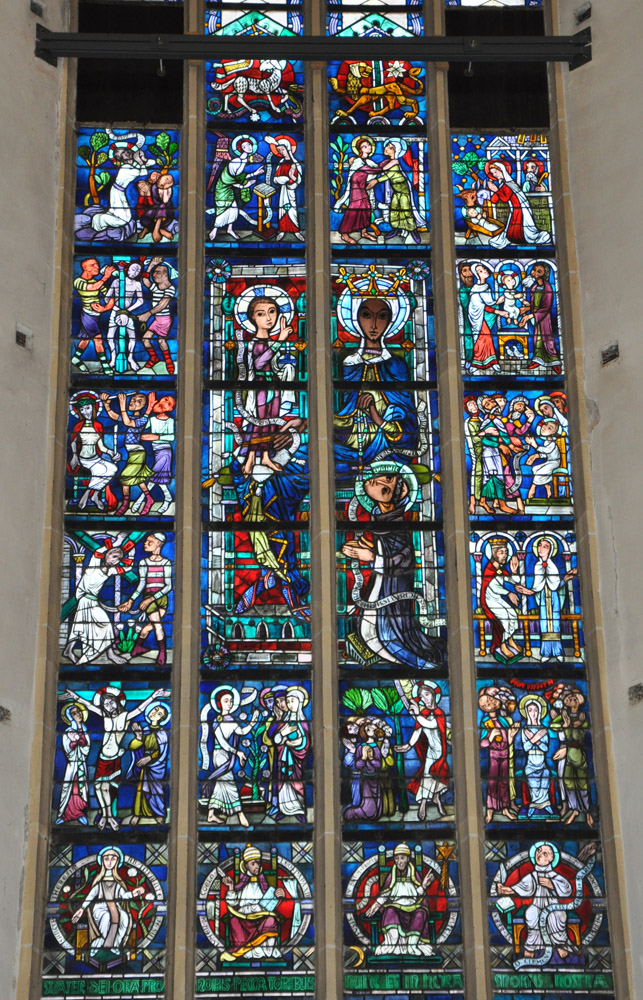
The Institution of the Rosary with Scenes from Sacred History
Second half of the 20th century
Stained glass
Frauenkirche, Munich, Germany
Seven panels trace Christ's passion, resurrection, and ascension into Heaven, in an L-shaped sequence of panels starting in the upper left corner and finishing in the third panel of the second row from the bottom. A complementary ⅂-shaped sequence tells the Virgin Mary's story from the Annunciation to Pentecost, starting with the second panel of the top row and continuing to the right and down. In the center, the institution of the rosary comprises six panels in the center.
In the bottom row we see four figures seated on thrones:
The words below the four panels form a phrase from the "Hail Mary" prayer: MATER DEI ORA PRO | NOBIS PECCATORIBUS | NUNC ET IN HORA | MORTIS NOSTRÆ, "Mother of God, pray for us sinners now and at the hour of our death."
View detail photographs and commentary on these panels of the window:
View this image in full resolution.
Read more about Our Lady of the Rosary.
Photographed at the site by Richard Stracke, shared under Attribution-NonCommercial-ShareAlike license.